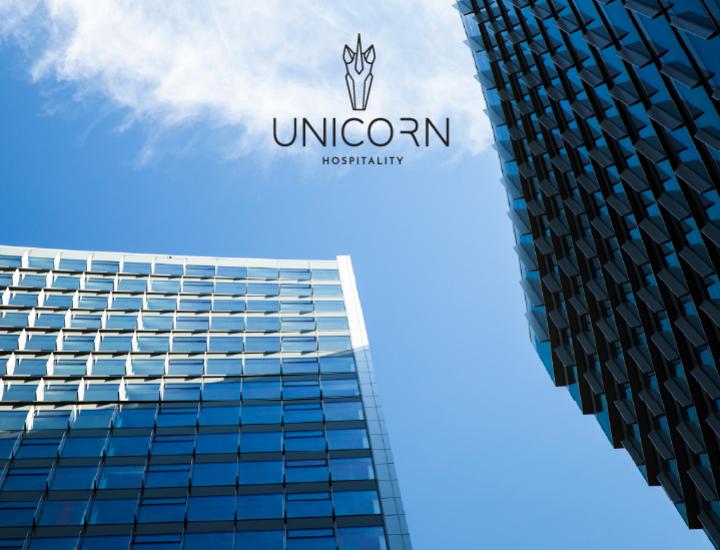Key Performance Indicators (KPIs) for Hotel Success

In the dynamic hospitality industry, success hinges on understanding your guests, optimizing operations, and maximizing revenue. This guide delves into crucial key performance indicators (KPIs) for hotels, empowering you to assess strengths, identify areas for improvement, and ultimately achieve long-term success.
Leverage Unicorn Hospitality's unparalleled expertise for world-class hotel management solutions and insightful hotel consulting services that optimize your property's performance.
Room Performance Metrics
- Occupancy Rate: This fundamental metric indicates the percentage of rooms occupied on a given day or period.
- Calculation: Occupancy Rate = Number of Occupied Rooms / Total Rooms Available
- Interpretation: Occupancy rate provides a basic understanding of room demand. However, relying solely on this metric can be misleading. A consistently high occupancy rate might suggest limited pricing flexibility, while a low rate could indicate underperformance or a need for stronger marketing efforts.
- Average Daily Rate (ADR): This metric reflects the average amount of revenue generated per occupied room per night.
- Calculation: ADR = Total Room Revenue / Number of Occupied Rooms
- Interpretation: Monitoring ADR allows hotels to assess their pricing strategy relative to the market and competitor offerings. An increasing ADR signifies successful pricing strategies, while a decline might suggest a need for adjustments based on seasonality or competitor analysis.
- Revenue per Available Room (RevPAR): This crucial metric combines total room revenue with the number of rooms available
- Calculation: RevPAR = Total Room Revenue / Number of Available Rooms
- Interpretation: A rising RevPAR indicates an increase in room revenue generation, suggesting effective pricing strategies and guest demand. A stagnant or declining RevPAR might necessitate adjustments in pricing or marketing efforts.
- Average Length of Stay (ALOS): The average duration that guests stay at the hotel. Longer stays can indicate guest satisfaction and reduce turnover costs.
- Calculation: ALOS = Total Room Nights / Total Number of Bookings
- Interpretation: Monitoring ALOS allows hotels to assess the effectiveness of marketing campaigns targeting longer stays and identify opportunities to improve guest experiences to encourage repeat bookings.
- Market Penetration Index (MPI): This metric compares a hotel's occupancy rate to its competitive set, providing insights into market share.
- Calculation: MPI = Hotel Occupancy Rate / Market Occupancy Rate
- Interpretation: An MPI above 1 indicates the hotel is capturing a larger share of the market compared to competitors.
- Average Rate Index (ARI): Similar to MPI, but for rates. It measures the hotel's average room rate compared to the competitive set.
- Calculation: ARI = Your Hotel's ADR / Competitive Set's ADR
- Interpretation: Analyzing ARI allows hotels to assess their pricing strategy relative to competitors and identify opportunities to optimize room rates based on market demand and competitor offerings.
Financial Performance Metrics
- Total Revenue per Available Room (TRevPAR): A comprehensive metric that incorporates all sources of hotel revenue, including rooms, food & beverage (F&B), spa services, and other income streams.
- Calculation: TRevPAR = Total Hotel Revenue / Number of Available Rooms
- Interpretation: TRevPAR provides a broader view of a hotel's overall revenue generation compared to RevPAR, which focuses solely on room revenue. Analyzing TRevPAR trends can help hotels identify opportunities to increase revenue from various sources beyond room bookings.
- Gross Operating Profit per Available Room (GOPPAR): this metric measures the profitability of a hotel based on its gross operating profit per available room. It considers both room revenue and operating expenses to provide a more comprehensive view of a hotel's financial performance than just occupancy rate or RevPAR.
- Calculation: GOPPAR = Gross Operating Profit (GOP) / Total Available Rooms (TAR)
- Interpretation: A higher GOPPAR indicates a hotel is generating more gross operating profit per available room. This suggests efficient operations and potentially strong revenue generation after accounting for operational costs.
- Gross Operating Profit (GOP): This is calculated by subtracting total operating expenses from total hotel revenue. Total operating expenses include costs associated with running the hotel, such as salaries, utilities, maintenance, and administrative costs.
- Calculation: GOP = Total Revenue - Total Operating Expenses
- Interpretation: GOP is crucial for evaluating the hotel's core profitability and operational efficiency. A high GOP indicates effective management and cost control, reflecting strong financial health. Conversely, a low GOP may signal operational inefficiencies or high expenses, identifying areas needing strategic improvements.
- Revenue Generation Index (RGI): This combines the aspects of MPI and ARI to evaluate the hotel's overall market share performance in terms of revenue, comparing it against a competitive set
- Calculation: RGI = Your Hotel's RevPAR / Competitive Set's RevPAR
- Interpretation: RGI provides a comprehensive picture of a hotel's revenue generation performance compared to competitors, considering both occupancy and room rates.
- Cost per Occupied Room (CPOR): This metric helps in understanding the cost incurred in selling a room. It encompasses all operational costs divided by the total number of rooms sold. This measure is critical for profitability analysis.
- Calculation: CPOR = Total Operational Costs / Number of Rooms Sold
- Interpretation: A low CPOR indicates efficient operations, while a high CPOR suggests a need to analyze and control operational expenses to maximize profits.
- Energy Usage Per Occupied Room: Measures the amount of energy used per room and helps in assessing the energy efficiency of the hotel.
- Calculation: Energy Usage Per Occupied Room = Total Energy Used / Number of Room Nights Sold
- Interpretation: Lower energy usage per room indicates more efficient use of resources, which not only reduces costs but also appeals to environmentally conscious consumers.
Marketing Performance Metrics
- Customer Acquisition Cost (CAC): This metric reflects the average cost associated with acquiring a new guest.
- Calculation: CAC = Total Marketing & Sales Expenses / Number of New Guests Acquired
- Interpretation: Monitoring CAC allows hotels to assess the effectiveness of their marketing and sales strategies. A high CAC might suggest a need to optimize marketing campaigns or target a different guest segment.
- Customer Lifetime Value (CLTV): This metric reflects the total revenue a hotel can expect from a guest over their entire relationship with the property.
- Calculation: To estimate a guest's lifetime value for your hotel, multiply:
- Average spending per stay (total hotel revenue divided by bookings)
- Average number of stays per year (total bookings divided by unique guests)
- Average customer relationship length (estimated based on industry data or expert opinion)
- Interpretation: Understanding CLTV allows hotels to prioritize strategies for guest retention and loyalty programs, maximizing revenue from existing guests.
- Calculation: To estimate a guest's lifetime value for your hotel, multiply:
Guest Experience Metrics
- Guest Satisfaction Scores (GSS): Customer satisfaction metrics, often derived from post-stay surveys, online reviews, and feedback forms, are crucial for gauging guest experiences and identifying areas for improvement.
- Interpretation: Positive guest satisfaction scores translate to positive word-of-mouth marketing, repeat bookings, and potentially higher room rates. Conversely, negative reviews can damage reputation and deter potential guests. Analyzing guest feedback allows hotels to identify areas for improvement, such as cleanliness, service quality, or amenities offered.
- Online Review Analysis: Analyzing online reviews allows hotels to understand guest sentiment and identify specific areas of praise or dissatisfaction.
- Interpretation: By monitoring online reviews, hotels can gain valuable insights into guest expectations and preferences. Addressing negative feedback promptly and showcasing positive reviews can significantly impact reputation management.
Human Resources Metrics
- Employee Satisfaction Scores: Employee satisfaction is critical for delivering exceptional guest experiences. High scores can correlate with lower turnover rates and better service quality.
- Interpretation: Monitoring employee satisfaction through surveys or feedback mechanisms allows hotels to identify areas for improvement in work culture, training, and compensation, ultimately leading to a happier and more productive workforce
- Employee Turnover Rate: Measures the rate at which employees leave and are replaced in the hotel.
- Calculation: Employee Turnover Rate = (Number of Employees Leaving / Average Number of Employees) * 100
- Interpretation: High turnover can indicate issues with employee satisfaction or workplace culture, impacting service quality and operational costs.
Food and Beverage Metrics
- Cost of Goods Sold (COGS): Monitoring COGS allows hotels to control food and beverage expenses, ensuring profitability.
- Formula: COGS = Beginning Inventory + Purchases - Ending Inventory
- Beginning Inventory: This represents the value of the inventory you have on hand at the start of a specific period (e.g., month, quarter, year).
- Purchases: This represents the total cost of all inventory items you bought during the period.
- Ending Inventory: This represents the value of the inventory you have on hand at the end of the specific period.
- Formula: COGS = Beginning Inventory + Purchases - Ending Inventory
- Average Spend per Guest F&B: This metric reveals how much guests are spending on average at the hotel's F&B outlets. Analyzing trends can help identify opportunities to increase guest spending.
- Calculation: ASPG = Total Hotel F&B Revenue / Total Number of Guests
- Interpretation: ASPG (F&B) helps analyze how much guests are spending on average on food and beverages during their stay. This metric is crucial for understanding the profitability of your F&B operations and identifying opportunities to increase revenue in this area.
- Food Cost: Food Cost Percentage measures the cost of food ingredients and consumables used to prepare dishes as a proportion of the total food revenue. It helps in evaluating how well the F&B department controls its food costs relative to its income from food sales.
- Calculation: Food cost % = (total cost of food/ total food revenue)*100
- Total Food Costs: This includes the cost of all ingredients and food items purchased for kitchen use. It may also account for related expenses like spices, oils, and culinary consumables used in food preparation.
- Total Food Sales: This is the revenue generated from selling food items.
- Interpretation: A lower food cost percentage indicates better cost control, contributing to higher profitability. Industry benchmarks vary, but generally, a food cost percentage between 28% and 35% is considered acceptable in the hospitality industry, depending on the type of establishment and its pricing strategy.
- Calculation: Food cost % = (total cost of food/ total food revenue)*100
- Beverage Cost: Beverage Cost Percentage measures the cost of beverages (alcoholic and non-alcoholic) relative to the revenue generated from beverage sales. This metric is crucial for bars and restaurants within hotels to manage inventory and pricing strategies effectively.
- Calculation: Beverage cost % = (total cost of food/ total food revenue)*100
- Total Beverage Costs: Includes the cost of all alcoholic and non-alcoholic drinks purchased for sale. This can also include mixers, garnishes, and other consumables used in drink preparation.
- Total Beverage Sales: The revenue from the sale of these beverages.
- Interpretation: Similar to food cost percentage, a lower beverage cost percentage is desirable as it indicates efficient use of resources and better profitability. A typical range for beverage cost percentage in the industry might be 18% to 24%, although this can vary widely based on the type of beverages sold and the establishment's pricing policies.
- Calculation: Beverage cost % = (total cost of food/ total food revenue)*100
Leveraging Hotel Market Research for Enhanced Performance
Understanding your metrics and specific market is crucial for optimizing hotel performance. Hospitality consulting firms like Unicorn Hospitality offer comprehensive hotel market research services. These services delve into factors like:- Local demographics and tourist trends
- Competitor analysis
- Seasonal demand fluctuations
- Guest preferences and expectations
Leverage Unicorn Hospitality's unparalleled expertise for world-class hotel management solutions and insightful hotel consulting services that optimize your property's performance.
CATEGORIES
RELATED ARTICLES
-

Hotel Master Planning: A Guide to Identifying and Mitigating Key Development Risks
-

A Guide to Conducting a Comprehensive Hotel Feasibility Study
-

Unicorn Hospitality's Guide to a Hotel Launch in Malaysia
-

The Ultimate Guide to Marketing Maldives Resorts
-

Unlocking Cambodia's Tourism Potential: How Hotel Consulting Can Help
